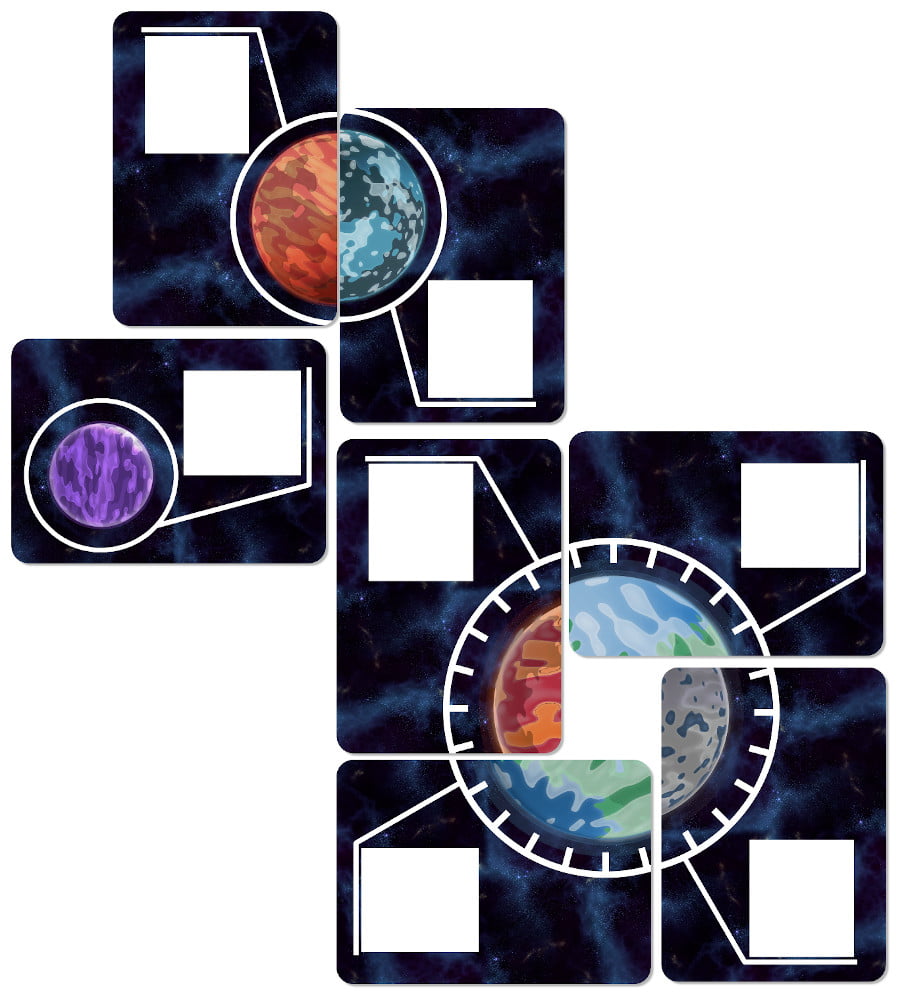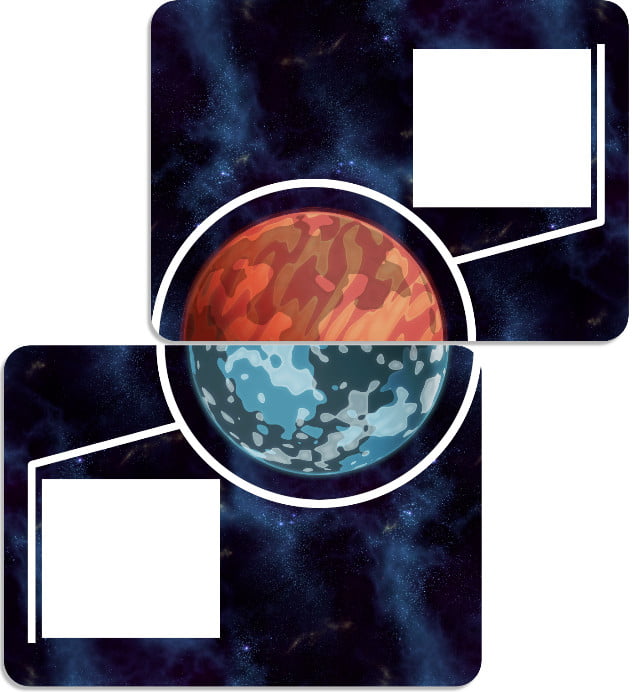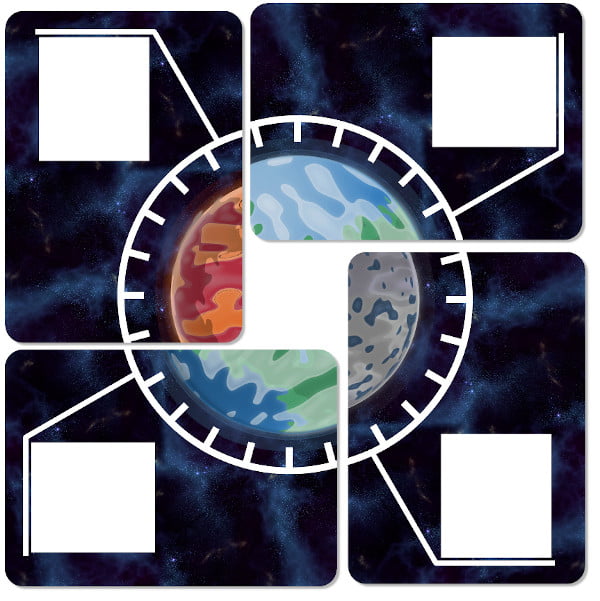This month, for phd reasons, game development took a backseat. But don’t worry, I still have something I dedicated time to looking at, even if I didn’t get to get it to a playtesting table (and I may yet get it to the table in the next few weeks, thanks to uni work).
But most of all, I think this game presents a very exciting looking form factor:
Yeah, right? Like get a load of that. It’s a bunch of planets, made out of cards. Each turn, players are going to be laying cards that expand on the identities of these planets, and each time they do that, the cards change how players may value those planets. You may occupy a place that’s rich in gold and eggs, haha, but now you see, I have discovered this region of the planet that reveals it smells like dinosaur farts. Do you want to populate the planet that smells like dinosaur farts? I didn’t think so, farty.
The game as it currently exists in my mind is that you’re playing explorers dicking around in a chunk of space where you don’t have a reason to know what all the planets are like. The planets are constructed out of standard playing card shapes, with each card capable of presenting a small planet or part of a medium or large planet. Each chunk has text on it, which gives me room to put traits on each card, so that all the larger planets have room for more abilities. Small planets are less predictable, but larger planets can be influenced by other people putting down cards on them.
You can spend the resources on planets to build up things in your own space. Maybe you’re trying to collect biological information on diversity (to add it to your own). Maybe you want to ensure the planets around you have thriving economies (or economies at all). Maybe you wanna see what kind of weird alien cultures are around for you to have sex with. The point is, the planets offer you resources, and you can spend those resources, but only conveniently. You’re not going to be able to strip-mine a planet in this game’s time scale, so it’s much more ‘what precious, small things, can we trade from this space?’
And of course, some planets are populated, but not every planet is.
This medium planet, you may lay down one half which gives you resources like CUBE and HAT, but your culture may have rules about interacting with a planet with resources like SPOO and FLEEM. So if then another player sets down the other half of the planet, that means you discover the other half of the planet, and when you find there’s SPOO there, well, it’s time for you to get off world. You don’t have a choice.
I like this idea as a way to represent exploration and strategic engagement with an explored space. The problem that follows from here, though, is wanting to design this game such that proximity is important. Planets need to be adjacent to other planets, and that means that card placement can be a way to deprive people of proximity, but also, if planets have proximity, I need a way to track player presence.
The more I think about it, as I arrive at these notes, I know I need there to be a wide number of cards for the planets. It’s got to be such that planets can have a lot of varied rules and resources on them so as to better ensure the game has variety and make the complicated planet-building system work. I also need a way to represent players spatially.
One idea at first is that the players are each different forms of ‘free’ in this planetary space. A single Enterprise-style ship that can warp around at speed, space-folding scientists, a spreading swarm of planetary mist and economic geckos that set up stores everywhere so that players are effectively ‘travelling instantly.’ But that dilutes the meaning of planets having their own proximity, because it’s not like the planets should be able to readily communicate with one another. After all, a bunch of them are unpopulated.
I know when I get to designing this play loop, that this game is going to be economic, it’s going to be characteristic, and it’s going to be spatial. I need things that let you move an economy around (players can trade?), players need to have unique ways of engaging with the world (player powers?) and the space of the planets needs to be important (meaning that that has to be the most important, core part of the play experience – no room for a card marketplace here).
I think what this means is that there’s going to be a deck of cards players draw from, and build around – but that deck of cards may have events, or special rules or maybe even other cards that combo with one another – as well as the exploratory cards that reveal new planets. Players are going to need their own little play space to work from, which I think means player boards or cards to give them a unique identity, and then I also think players need to have some way to track their positions in this space. That may mean tokens (good) or miniatures (not so good – I don’t like plastic I don’t need to use).
This is all I got. I did have to wrestle with a printer to try and make this game prototype, which was really frustrating considering it wound up being more of a test of my abilities as a wifi printer administrator than anything to do with my skills as a game designer. Maybe we’ll get more on this one, I know the idea still excites me.
This game also presents a potentially frustrating added question of the use of generative art. I want some kooky looking aliens, and them looking weird because a computer doesn’t know how to make them work right seems like a pretty cool use of a utility for making prototypes. On the other hand, there’s a risky momentum of these tools being used in a game prototype being seen as a way to justify their use in a final product, which isn’t where I want to be right now. On the gripping hand, it’s not like I can afford to pay artists in the first place.
Blegh, it circles around this a lot.


